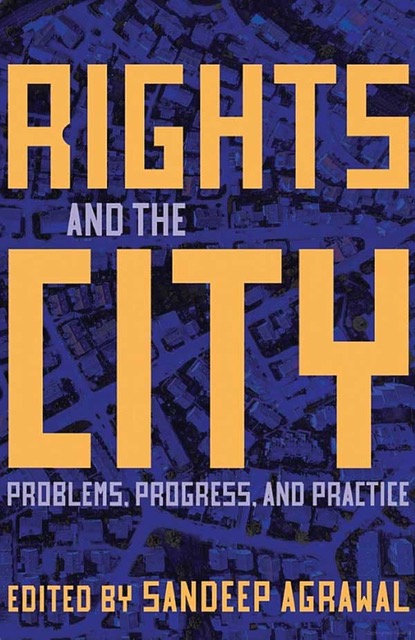Four decades after the Canadian Charter of Rights and Freedoms came into effect, it can be easy to assume that any discussion about citizens’ rights to and in the city has become outdated. After all, our rights to move and speak freely, to equality and security, are enshrined in the constitution. But constitutional rights only apply to legislation, leaving out the many instances in which human rights can be undermined, especially in cities, whose constitutional authority is muddled.
In Rights and the City, editor Sandeep Agrawal, professor of urban planning at the University of Alberta, uses the influential theories of Henri Lefebvre, a French philosopher and sociologist, to organize this collection and to illustrate the way ahead in order for our rights to and in cities to become truly entrenched.
“For laws to effectively develop… they first must be acknowledged generally as norms by the people they affect,” writes Jennifer Orange, assistant professor at Toronto Metropolitan University’s school of law, in one chapter. “When Lefebvre acknowledges that rights start as customs, he was aligning aspects of his theory with those of norm development.”
But norms in Canada didn’t always develop around principles of equality and inclusion. “Not all Canadians had equal rights after Confederation,” Agrawal writes in “Human Rights and the City in the Pre-Charter Era,” noting “discrimination was an unaddressed part of Canadian society, with racism, sexism, ableism and xenophobic views often seen as the norm.”
Evidence of this is found in the discriminatory practices enacted by municipalities across Canada, such as “slum” clearing, restrictive covenants and exclusionary zoning. While Agrawal’s research has found that Alberta cities today seem to be aligned with the Charter and the Alberta Human Rights Act, many challenges remain. Alexandra Flynn, a UBC law professor, argues cities aren’t well equipped to address the complex challenges brought about by increased power and autonomy, a situation that becomes evident in the relationship between cities and Indigenous peoples. Courts, legislation and constitutional protection have allowed cities to neglect their obligation to Indigenous peoples, Flynn explains, while also undermining the protections for their land interests at the urban scale.
But there are glimpses of hope. By broadening our view to include the many functions and meanings that city space represents for different groups of people, the spatial dimension of human rights becomes clearer—and so does our right to the city. “If we can confront the issues at a localized level, where they have urgency and impact,” Agrawal writes, “we can create spaces of healing and growth rather than of hurt and frustration.”
Ximena González is a writer and editor in Calgary.
_______________________________________


